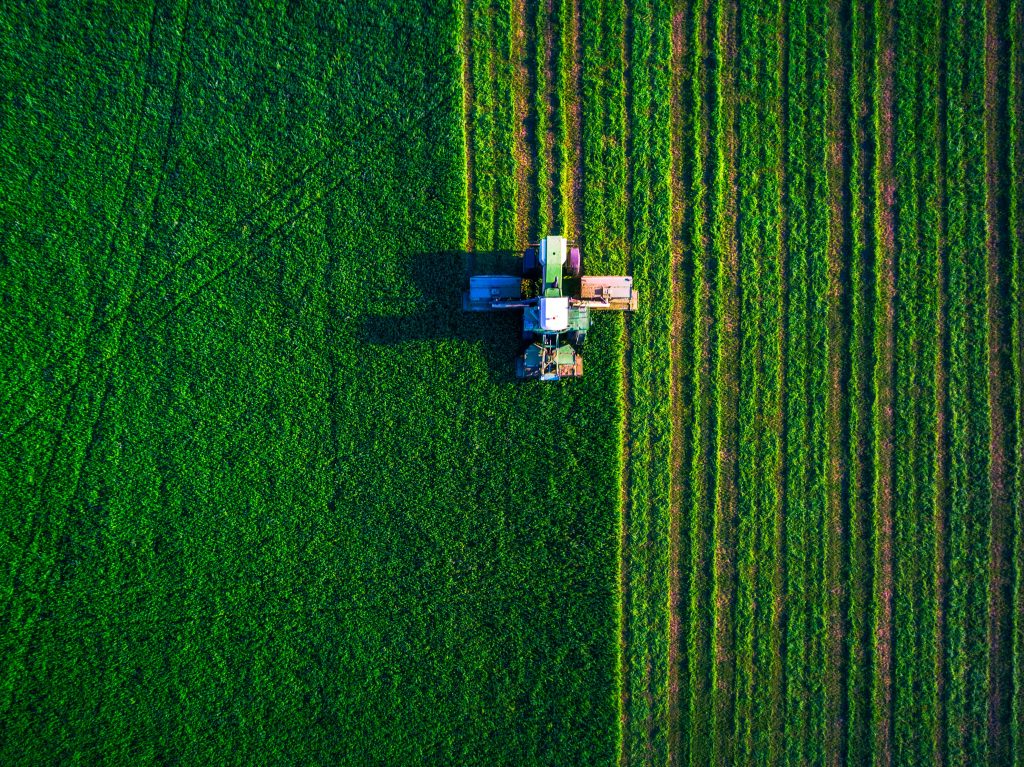Chapter 1. Facing the challenges of feeding more people and reducing emissions
Towards a circular food chain
By Heidi Vella
“What climate change does is to bring back uncertainties from the time we were all hunter gatherers. We cannot assure any more that we will have the harvest we have planted.”- Jose Graziano, director-general, FAO.
Food production is at the centre of many different issues: climate change, population growth, urbanisation, biodiversity and income distribution. There are many more. As such, today’s agriculture and food production industries, and their supply chains, face growing uncertainties and new challenges that are disrupting the status quo.
Food producers and other stakeholders will need to find and adopt radical solutions to meet these competing needs and to maintain the sustainability of their operations. Fortunately, while this is now a time of great change, it’s also one of incredible innovation. Thanks to the rise in technology and new scientific discoveries, answers are being found.
Intensified agricultural production processes and the clearing of forests has led to the degradation of natural resources that is, in turn, contributing to environmental disruption. In many instances, this has resulted in agricultural production being limited by the increasing scarcity and diminishing quality of land and water resources.
Christiana Figueres, former executive secretary of the UN Framework Convention on Climate Change, told a summit in November 2018 that producers had to be prepared to adapt and respond to increasingly changing climates. Previously known ‘agricultural belts’ are no longer a given, she said, as precipitation was shifting and moving elsewhere. “We need adaptive technologies to be developed, such as seeds and plants that are more resilient to drought, so we can continue to cultivate food in those areas.”
Farmers need more sophisticated information about weather patterns and demand and soil quality, so they can plan better for every eventuality. Robert Opp, director of innovation and change at the UN World Food Programme, says personalised services that utilise artificial intelligence, soil sensors and even blockchain could be developed for both large and small farmers.
“A farmer could take a picture of a diseased plant and share sensor information, send it away via their mobile to discover what kind of disease it is and how to treat it – these types of personalised and customised solutions will hugely impact productivity,” he explains. According to research by Accenture, precision agriculture solutions such as this can boost profitability in some cases by $55 to $110 per acre.
Much of the expected population growth will occur in emerging markets. These countries are witnessing an explosion in the middle classes, driven by greater industrialisation and urbanisation that is, in turn, resulting in more demand for industrially resource-intensive meat and dairy. The UN’s Food and Agriculture Organisation (FAO) calculates that 26% of the planet’s ice-free land is already used for livestock grazing and around 33% of croplands are used for animal-feed production. It also says that one-third of the food produced in the world for human consumption yearly – approximately 1.3 billion tonnes – gets lost or wasted. In developing countries, where food is preserved less efficiently, average waste is estimated to be 30-50% of total spend on food. This is unsustainable in the long-term. Societies will need to switch to a more plant-based diet and industry will need to adopt a more ‘circular’ food chain.
On the one hand, the UN World Food Programme is working with small farmers using mobile phones and other technologies to match food production to nearby demand to cut some of this waste. On the other, Ostara Nutrient Recovery Technology in Vancouver is recovering 85% of the phosphorus and 15% of the nitrogen from wastewater to create a high value fertiliser product. Other more technologically advanced solutions are emerging, including vertical farming, where crops are grown close to cities in space-saving artificially controlled and AI-enhanced environments. Lab-grown food offers alternative sources of meat and eggs.
But if food and agricultural systems remain on their current path, the evidence points to a future characterised by persistent food insecurity and unsustainable economic growth. Overhauling farming and food systems and consumption is complex due to the vast number of stakeholders involved and the differences in ecosystems. But maintaining the status quo is not an option.
European Commission policy
The UK has committed to observing EU food waste policy from its circular economy package of directives. The following is from the European Commission’s action plan published in 2015.
“Food waste takes place all along the value chain: during production and distribution, in shops, restaurants, catering facilities, and at home. This makes it particularly hard to quantify: today, there is no harmonised, reliable method to measure food waste in the EU, which makes it more difficult for public authorities to assess its scale, origins, and trends over time. Addressing the measurement issue is an important step towards a better understanding of the problem, a coherent monitoring and reporting as well as effective exchange of good practices across the EU.
EU action is also important in areas where food waste can result from the way EU legislation is interpreted or implemented. This is the case for rules concerning food donation to food banks, and the use of safe unsold food as a resource in animal feed.
Another area where action might be needed concerns date marking, in particular the “best before” date. This can be wrongly interpreted as an expiry date and lead to the discarding of safe, edible food. The Commission will examine ways of promoting a better use and understanding of date marking by the various actors of the food chain.”
Heidi Vella is a journalist who specialises in environmental and sustainability issues.
Click to download the full report
Pelican Communications is a specialist in the environment & CSR, food, packaging & logistics and trade association sectors and offers a range of services such as strategy, design, content creation, public relations and people development.
Contact us for marketing and communications expertise.
